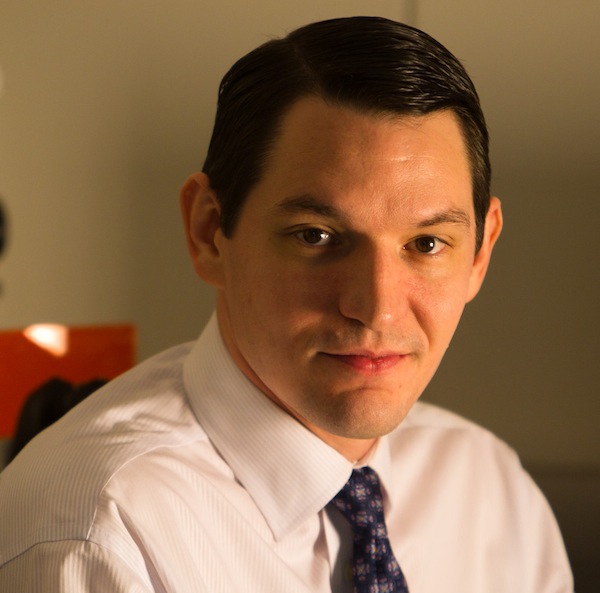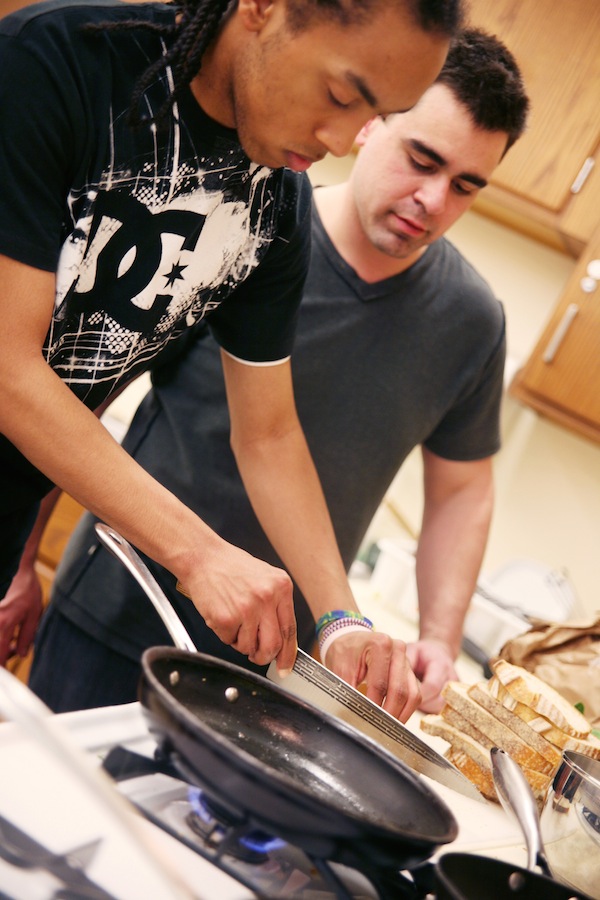Here's a look at five people in Pittsburgh who are interrupting business as usual to challenge the way we think about and interact with our world. These disruptors aren't afraid to innovate, question norms and shake up the status quo in Steel City.
Rejecting society's expectations in the performing arts
Challenging the ageist performing arts industry, Beth Corning showcases meaningful work by talented artists who've honed their crafts throughout a lifetime of dedication.
Corning, a dancer, choreographer and artistic director, founded the Glue Factory Project in 2000 to spotlight dancers who've rejected society's insistence they be put out to pasture by age 40. The project was incepted in Minneapolis, where Corning operated her own dance company from 1993 to 2003.
The Glue Factory Project went on hiatus when Corning and her family moved to Pittsburgh in 2003. She was appointed artistic and executive director of Dance Alloy, which was Pittsburgh's premiere modern dance company. Despite her success at the organization, her relationship with the company ended abruptly in 2009 when the board announced it “was looking for a change in direction.”
Though the sudden dismissal stung, Corning quickly realized she wanted to revive The Glue Factory. She soon established Corning Works as a vehicle for the project, creating collaborative dance theater works that intertwine humor with the exploration of issues such as gender and aging.
“We are producing pieces filled with such layers of life that someone in their 20s couldn't bring to the stage — but someone in their 50s and 60s can't help but bring it,” explains Corning. “There's a lot a 50-to-60-year-old person can say with a simple gesture that has so much more infused in it — and a lot more life in it.”
The next Glue Factory Project performance is a duet created and performed by Corning and award-winning dancer Arthur Aviles. Parallel Lives will hit the stage in Pittsburgh September 10 through 14.
Promoting realistic beauty standards
What if fashion dolls were made using standard body proportions? That question ignited a firestorm of media attention and public support for Nickolay Lamm and his vision for a toy that promotes realistic beauty standards. Lamm recently launched a crowdfunding campaign that raised more than five times his initial goal of $95,000 — more than half a million dollars — to get these dolls into production and into the hands of kids across the country.
Body image issues personally affected Lamm when he was in high school — he exercised to the brink of exhaustion to reach his desired weight. The experience taught him an important lesson that he hopes his dolls will help reinforce: “Every one of our bodies is different, so we should not be aspiring to some idealized standard,” he explains.
Marketed under the brand name “Lammily,” the dolls' proportions are based on the average body measurements of a healthy 19-year-old woman. Lamm's computer-generated illustration of the doll went viral after appearing on Huffington Post. People wanted to know where they could buy it, and Lamm has been working hard to put them into production.
Unlike heavily made-up Barbie dolls that come decked out in revealing, sparkly outfits, Lammily dolls wear minimal makeup and simple clothing. The exclusive first edition doll will wear a blouse, denim shorts and white sneakers.
Lamm is working with fashion designers to make sure future fashions are “fun, but practical — something that people in real life would want to wear,” he says.
He's also collaborated with Robert Rambeau, former vice president of manufacturing at Mattel, to find a high quality manufacturer. The first edition dolls will be shipped out in November; they're available for preorder at lammily.com. The line will eventually be available in stores; a specific timeline is not yet in place.
“When I look at current fashion dolls . . . I'm reminded that there are some things that are just a mirage and not worth emulating,” says Lamm. “With Lammily, I want to create a line of fashion dolls that reflects reality, not fantasy.”
Leading Pittsburgh's Food Revolution
Housed in the Strip District's former No. 7 Engine Co. Firehouse, Bar Marco has class and heart. But there's one thing it doesn't have: a drink menu.
“Our servers and bar tenders love starting conversations with our guests,” says Bobby Fry, one of Bar Marco's four co-owners. “Why have a menu and make the guest ask questions that they may or may not feel comfortable asking? Let's get right to the conversation. What are your likes and dislikes? Do you like sweet things or bitter things? Do you have a spirit you absolutely hate? One that you really love — or do you want to try something new?”
While cocktails are inseparable from Bar Marco's identity, the establishment's vision for the future is much larger. “We're going to democratize food in Pittsburgh,” says Fry.
He's not kidding. In 2012, during the One Young World Conference, celebrity chef Jamie Oliver challenged Pittsburgh to revamp its eating habits. Bar Marco is one of seven organizations participating in Pittsburgh's Food Revolution.
Bar Marco partners with Food Revolution International to bring the Food Revolution Pittsburgh Cooking Club to Barack Obama Academy in East Liberty. The club empowers high school students to make better food choices by equipping them with culinary skills, access to local chefs, industry experience and their own set of cookware to keep.
Outside of the classroom, Bar Marco and Food Revolution Pittsburgh partner with community organizations to provide educational cooking demonstrations and resources for children and families related to dining and living well. Bar Marco also hosts No Menu Monday fundraising dinners featuring guest chefs and benefitting such organizations as Let's Move Pittsburgh, Grow Pittsburgh, Assemble, and many others.
Hacking the human body
Dr. Steven Little and his team of researchers and engineers at the University of Pittsburgh are hacking the human body at the cellular and molecular level to regenerate tissues and control immune system response. This work is meant to improve results in the transplantation of tissue and organs, and to produce powerful medical treatments unlike any in existence.
“The 'hacking' analogy is particularly apt because the body runs entirely on information transfer,” says Little, chair of Pitt's Department of Chemical and Petroleum Engineering. “This kind of medicine is completely different than what exists today. We've used it to produce acceptance of whole limb transplants in rats, which will hopefully be applicable to wounded soldiers who have lost an arm, leg or hand. We've also used it to treat periodontal disease without removing a single bacterium from the mouth because we can influence the underlying cellular environment. All of this is possible by 'hacking' into the body's own natural communication pathways and using it to our advantage.”
By employing a strategy known as biomimetics, researchers “talk to cells and tissues in our bodies” in their own language, explains Little. His team has developed technology that allows them to “program” synthetic things — as tiny as cells and as large as tissues — that mimic cell-driven communication.
“These new tools have already shown significant promise as next-generation medical treatments in a variety of disease models where current medical treatments have no answer,” says Little.
Though the Little Lab conducts its work primarily within the engineering department at Pitt, it collaborates heavily with the medical school. With backgrounds in chemical engineering, bioengineering, pharmaceutical science, immunology, chemistry and physics, the group works with departments such as ophthalmology, immunology, dental medicine, plastic surgery, chemistry and surgery, as well as the Fox Center for Vision Restoration, the Vaccine Design Center and the McGowan Institute for Regenerative Medicine.
“This collaboration is not entirely uncommon these days, but only recently do we see medicine relying so heavily on engineers,” says Little. “I do think, however, that our group is particularly collaborative and places a heavy emphasis on diversity in order to look at problems from different perspectives and to find innovative solutions.”
Championing green solutions to a broken sewage system
Barney Oursler is the executive director of Pittsburgh UNITED, a coalition of labor, faith-based, community and environmental organizations that support initiatives for sustainable economic development.
“Barney has a long history of identifying problems that need to be fixed in Pittsburgh, and fixing them,” says Jennifer England, a communications professional who works closely with local political and community organizations.
Oursler's latest cause is green stormwater control — it's the genesis of Pittsburgh UNITED's Clean Rivers Campaign.
Due to overwhelmed sewers, the Allegheny County Sanitary Authority (Alcosan) dumps sewage into Pittsburgh's rivers during storms at the rate of one billion gallons per year. In 2008, the Environmental Protection Agency declared the county's sewer overflows a violation of the Clean Water Act and required Alcosan, under a federal consent decree, to eliminate combined sewer overflows by 2026.
The Clean Rivers Campaign opposes Alcosan's proposal to expand the treatment plan and overhaul the overwhelmed sewers by digging more than 20 miles of subway-sized tunnels to store water until it can be treated.
“Ratepayers are required by these consent decrees to spend somewhere between three and five billion dollars over the next 20 years to do this,” explains Oursler. The Clean Rivers Campaign, meanwhile, argues for investment in large-scale green infrastructure to “manage rain where it falls, putting it into the ground or slowing it down to stop overflows during rainstorms.”
That infrastructure would include rain gardens and green roofs to capture rain, and the installation of pervious pavement that allows rainwater to soak into the ground below. Additional solutions could include building tree canopies and planting vegetation along local business corridors and cutting curbs for street-runoff harvesting.
“Large-scale green infrastructure raises the value of homes, especially in blighted neighborhoods,” says Oursler. “Those tree-lined local business districts will get shoppers back into their stores.”
In January, the EPA rejected the Alcosan proposal. That put the spotlight on the Clean Rivers Campaign, which was told three years ago that the Alcosan plan for a tunnel solution was unstoppable.
As Oursler puts it, “After our campaign knocked on 43,000 ratepayers doors, educated many hundreds of ratepayers about the choice we have of how to fix our sewer problem enough to get them to come to dozens of public hearings and events, Alcosan admits that green infrastructure is good and wants to add it to their tunnel plan for the sewer fix.”





